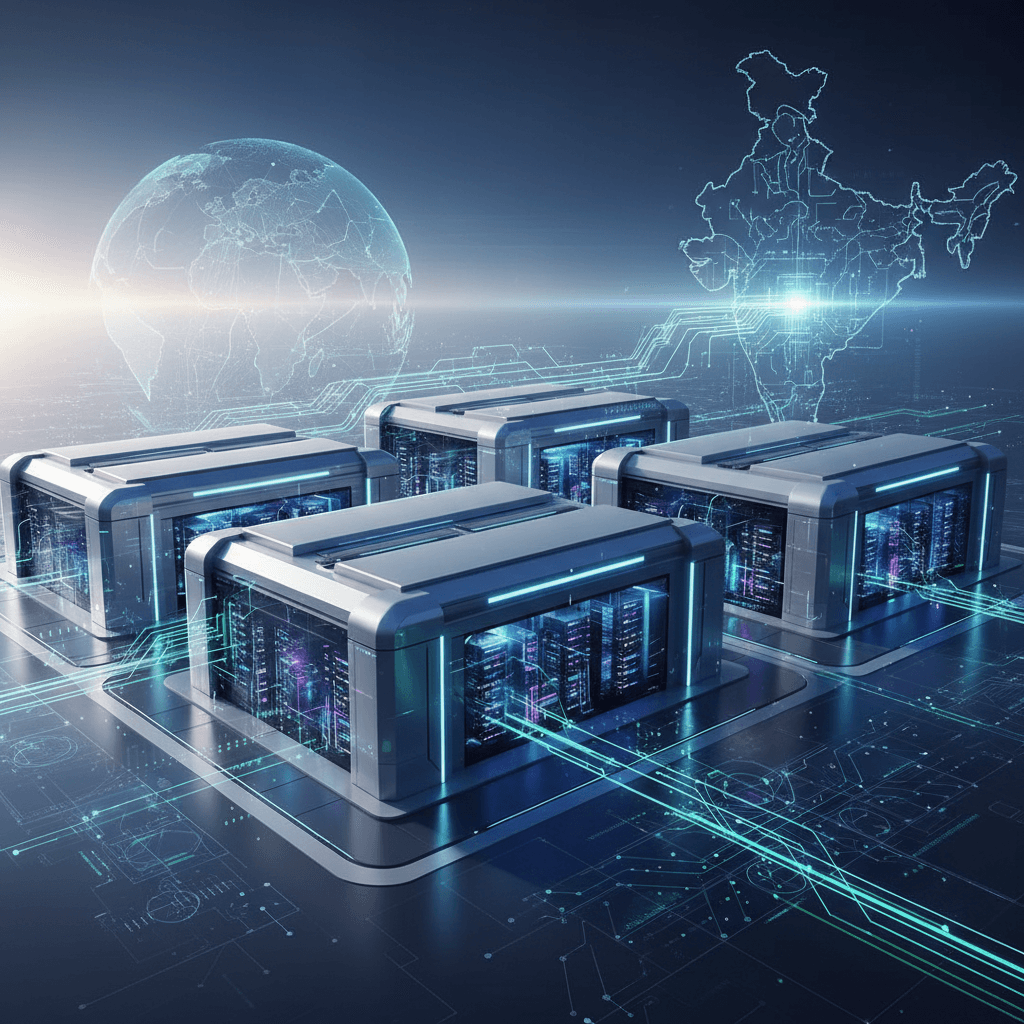STT GDC India invests ₹5,000 crore, builds massive AI-ready data centers in Maharashtra
This ₹5,000 crore boost builds cutting-edge, AI-ready data centres across Maharashtra, fueling India's digital and AI revolution.
October 17, 2025

ST Telemedia Global Data Centres India has formalized a significant commitment to expand its digital infrastructure footprint in Maharashtra, signing a Memorandum of Understanding with the state government for an investment of up to ₹5,000 crore.[1][2][3] This strategic infusion of capital is earmarked for the expansion of existing data centre campuses in the key metropolitan areas of Mumbai and Pune, as well as the development of a brand new, large-scale facility.[1][3] The agreement underscores a shared vision between the public and private sectors to accelerate digital transformation and firmly establish Maharashtra as a premier destination for global technology infrastructure. This move is poised to substantially enhance the state's data handling capabilities, providing a critical foundation for the burgeoning digital economy and the increasingly complex demands of next-generation technologies. The projects are expected to be a significant economic catalyst, projecting the creation of over 500 direct skilled jobs and an estimated 2,000 indirect employment opportunities across various sectors.[1]
The centerpiece of this investment is the development of a new 27-acre data centre campus in Palava, purpose-built to cater to the intensive demands of high-performance computing and artificial intelligence workloads.[1][3] This forward-looking approach addresses a crucial need in the Indian market, where the rapid adoption of AI is creating unprecedented demand for robust, scalable, and highly specialized digital infrastructure.[4][5][6] Recognizing the unique requirements of AI, STT GDC India plans to equip its new and expanded facilities with advanced technologies, including state-of-the-art liquid cooling systems, which are essential for managing the heat generated by high-density computing clusters.[1] This technological focus ensures that the new data centres will be "AI-ready," capable of supporting the most demanding applications for hyperscale clients, enterprises, and the wider digital community.[1] By building a resilient digital backbone, the investment directly supports the infrastructure necessary for innovation and growth in an increasingly data-driven world. The expansion solidifies STT GDC India's already formidable pan-India presence, which spans 28 facilities across 10 major cities, including key hubs like Chennai, Bengaluru, Delhi, and Hyderabad.[1][3][7]
This substantial investment arrives at a pivotal moment for India's technology sector, with the artificial intelligence revolution acting as a primary catalyst for data centre growth.[4][5] The proliferation of AI applications, from machine learning and predictive analytics to generative AI, is fueling an exponential increase in data generation and the need for massive computational power for its processing.[5][6] Industry reports indicate that India's data centre capacity is set for a major expansion in the coming years, largely driven by the demands of AI workloads.[5][6][8] Traditional data centers are often ill-equipped to handle the power density and cooling requirements of modern AI hardware. STT GDC India's investment directly tackles this challenge by focusing on purpose-built, AI-ready infrastructure. This strategic alignment is crucial for India to harness the full potential of AI, providing the necessary foundation for businesses, academic institutions, and startups to develop and deploy large language models and other AI-driven services.[8] The development is a key enabler for the national digital economy, ensuring that the country has the sovereign capacity to store and process its own data, a growing priority for the government.[8]
The decision by STT GDC India to invest heavily in Maharashtra is a strong endorsement of the state's proactive and supportive policy environment. The collaboration aligns perfectly with the state government's vision to position Maharashtra as India's preeminent hub for technology and innovation.[1][3] This ambition is backed by concrete policies, such as the Information Technology and Information Technology Enabled Services (IT & ITES) Policy of 2023, which creates a favorable climate for data centre development.[9][10][11] This policy framework provides a range of attractive incentives, including 100% exemptions on stamp duty for land acquisition and other agreements, relaxed building norms for parameters like floor height and parking, and a single-window clearance mechanism to streamline approvals.[9][10] By designating data centers as an essential service, the state ensures uninterrupted operations.[10] This supportive stance has made Maharashtra a magnet for digital infrastructure investment, with other major players like the Adani Group also committing tens of thousands of crores to develop hyperscale data centers in the region.[12] This trend solidifies Mumbai's position as a leading data centre market in the Asia-Pacific region, further enhancing the state's digital appeal.[13]
In conclusion, STT GDC India's ₹5,000 crore investment represents a landmark development for Maharashtra and the nation's broader digital ambitions. It is more than just an expansion of physical infrastructure; it is a strategic move to build the foundational capacity required to power India's AI-driven future. By developing advanced, AI-ready data centres in Mumbai, Pune, and the new Palava campus, the company is directly addressing the most critical needs of the modern digital economy. This initiative will not only generate significant employment and economic activity but also provide a robust and scalable platform for innovation. As India continues its rapid digital transformation, this collaboration between STT GDC India and the Maharashtra government serves as a crucial building block, ensuring the country is well-equipped to compete and lead in the next era of technological advancement.